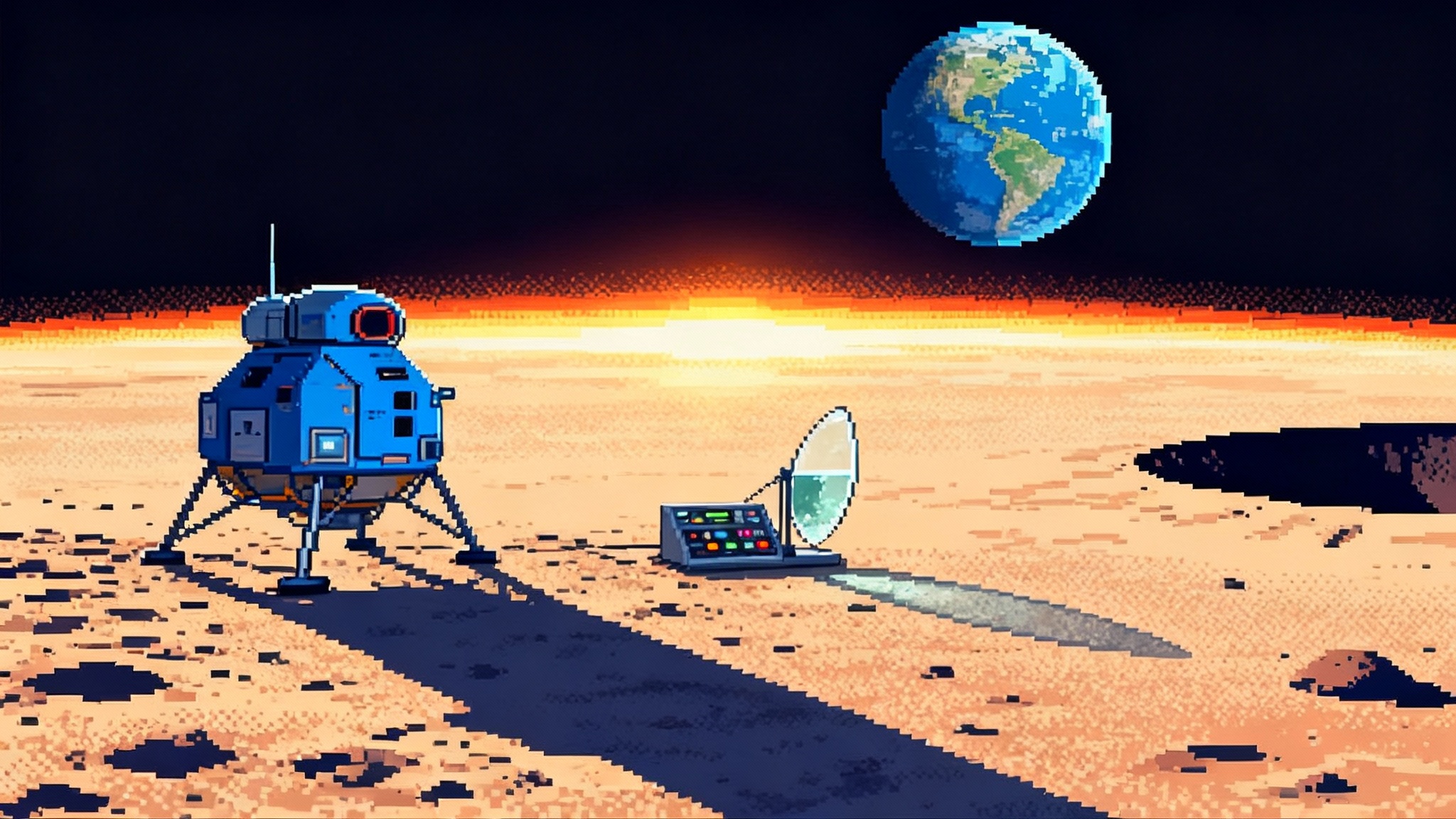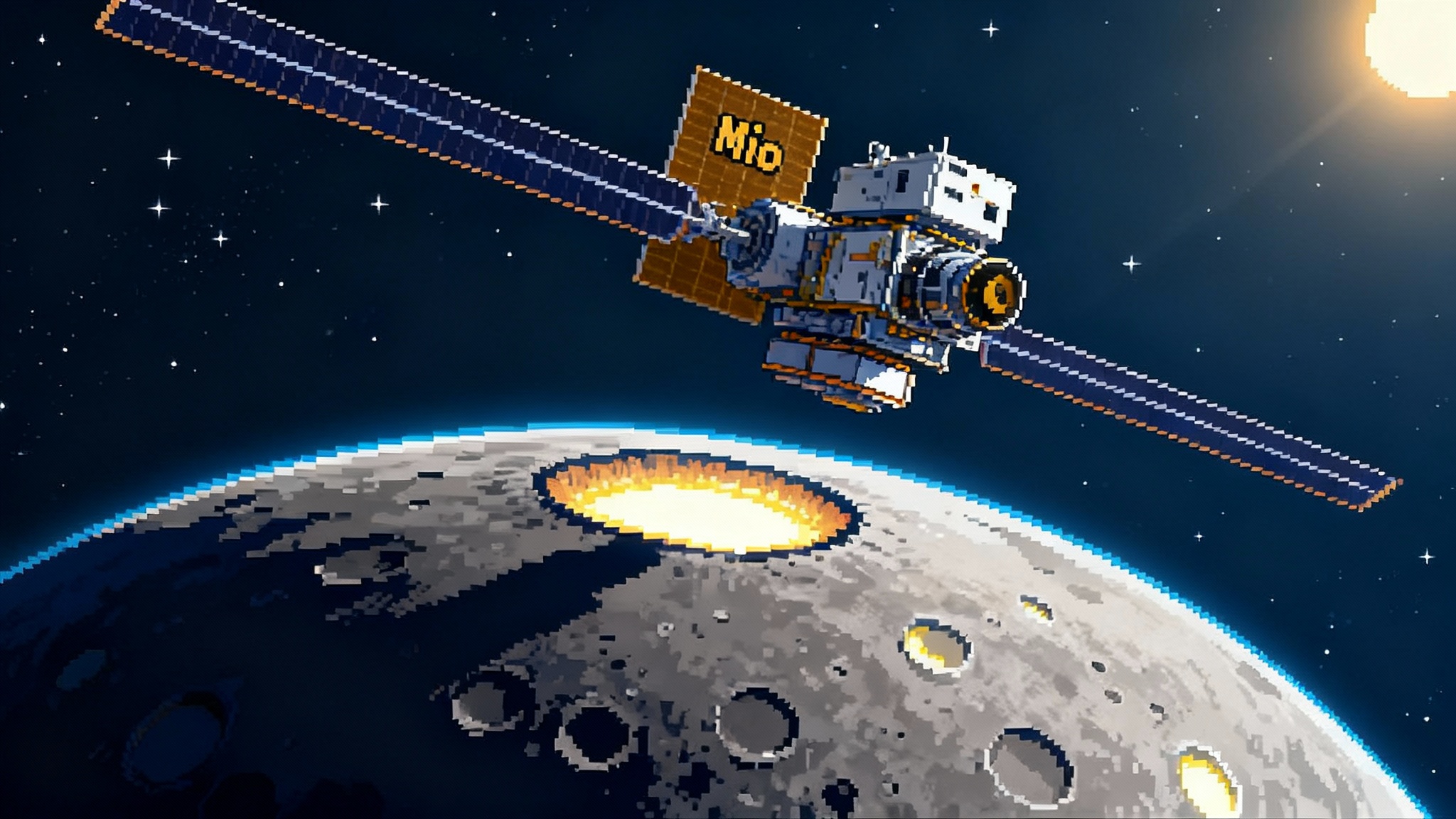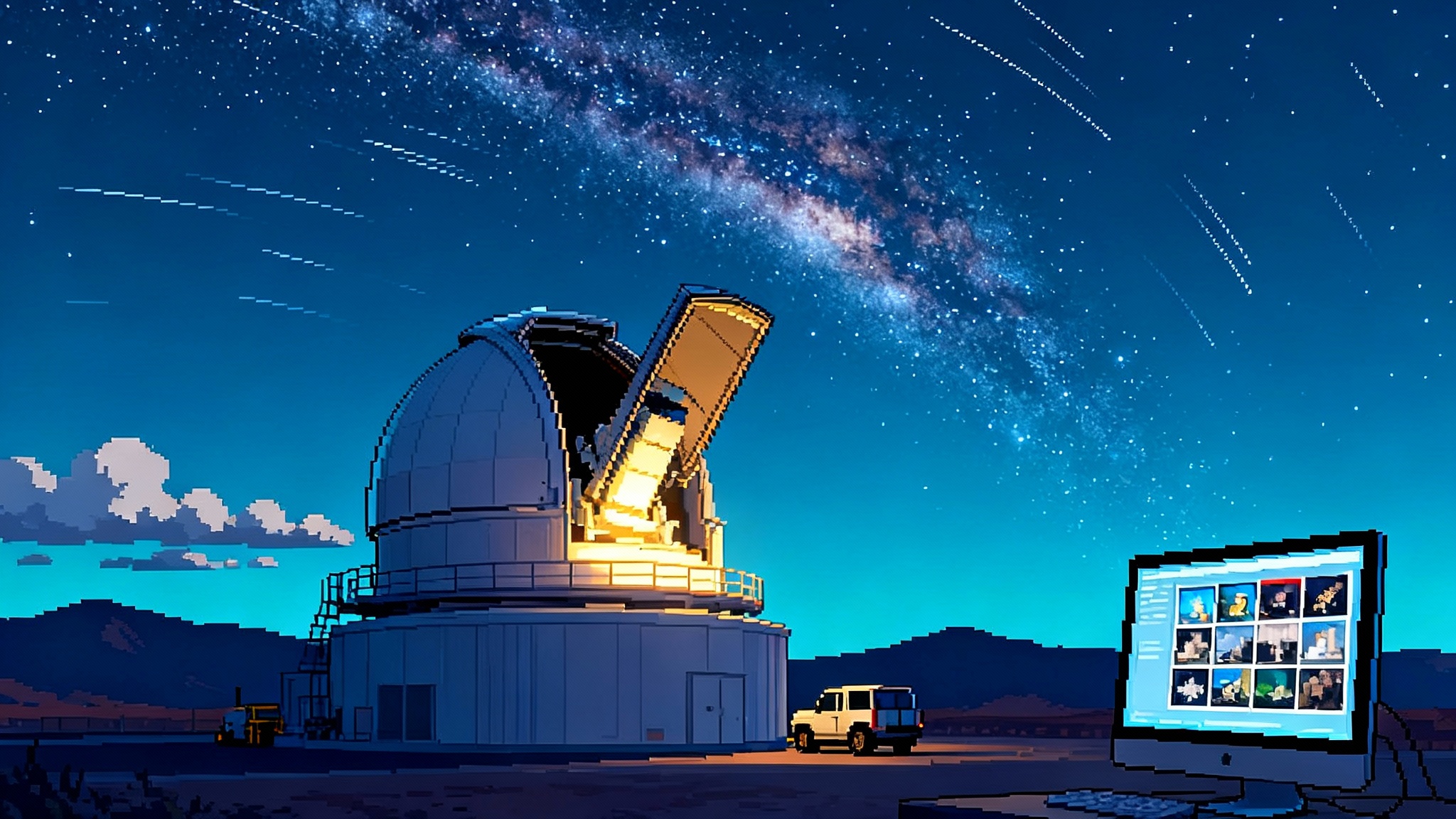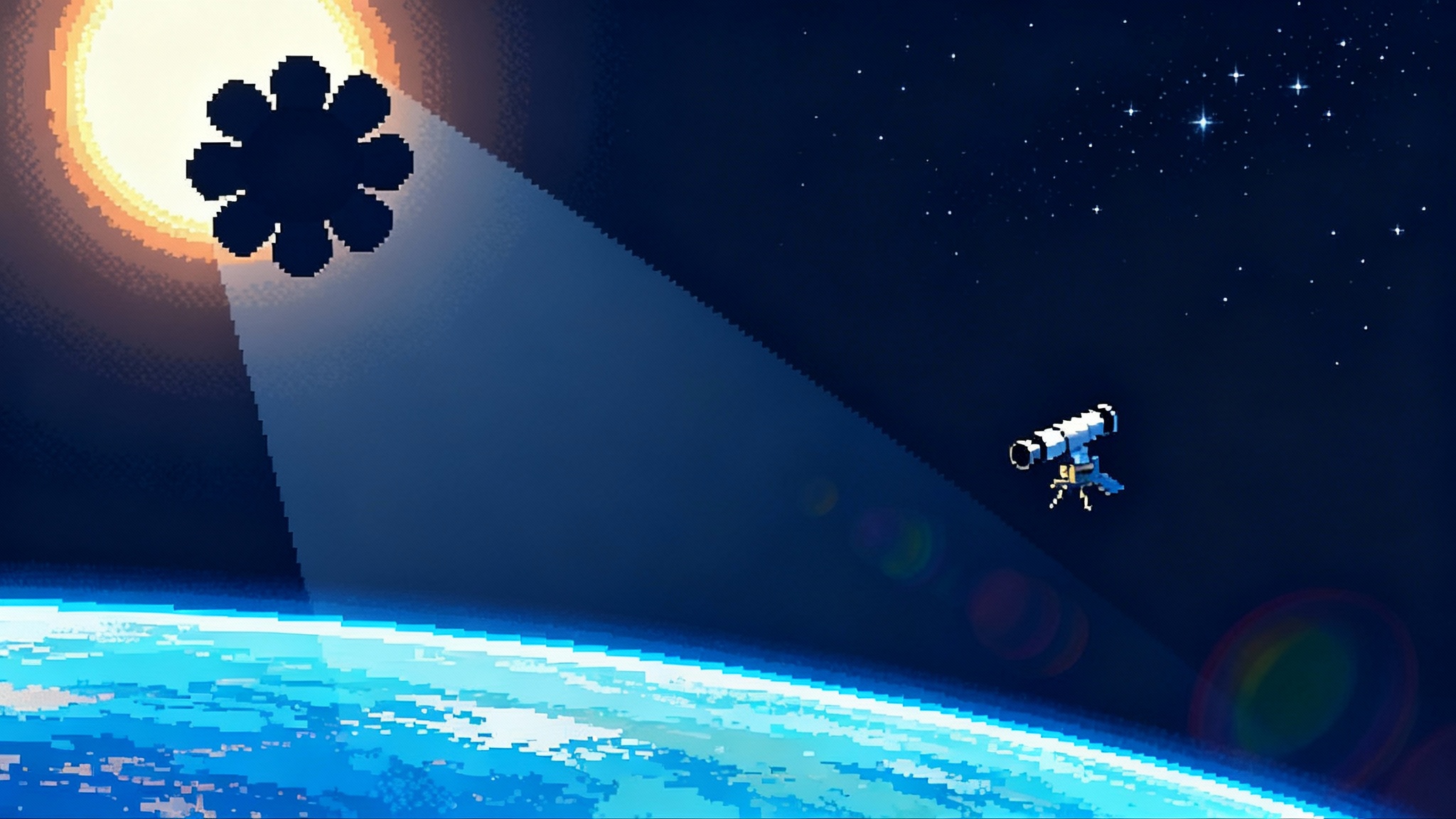Rubin’s First Look Sparks a Real-Time Astronomy Revolution
On June 23, 2025, the Vera Rubin Observatory proved the sky can talk back in near real time. Here is how brokers, AI, and fast follow-up are about to change planetary defense and transient astronomy for everyone from labs to backyard observers.

June 23, 2025: the night the sky started talking
When the first images from the Vera C. Rubin Observatory were unveiled on June 23, 2025, they were more than a milestone photo op. In about ten hours of early observing, Rubin revealed 2,104 previously unknown asteroids, seven of them near Earth, and none of them dangerous. That sprint previewed what the next decade will feel like: a sky that reports its own changes in near real time. The question is no longer whether we will see things fast enough. It is whether we can act on what we see. For details and images, see SLAC's first imagery release.
The reveal capped years of engineering: an 8.4 meter mirror, a 3,200 megapixel camera, and a cadence designed to sweep the southern sky every few nights. Each exposure is a postcard. The sequence of exposures becomes a time-lapse of the universe. Within a minute of every exposure, software compares the fresh image with a deep reference and flags every change, from flaring black holes to moving rocks. That is how the telescope turns photons into alerts, and alerts into action.
Rubin's First Look also marked a cultural turn. Watch parties around the world did not just celebrate images. They rehearsed a new workflow. Scientists, students, and amateurs gathered to ask the same practical question: how do we catch the right needles from a haystack that resets every night.
The alert firehose and the switchyards that tame it
Rubin will generate on the order of ten million change alerts per night. Each alert is a compact packet with contextual cutouts, history, and statistics. Alerts are not raw images; they are structured clues. They arrive with a latency on the order of a minute after observation. At this speed and volume, a single research group cannot drink from the firehose. You need switchyards. In Rubin's ecosystem, those switchyards are called alert brokers.
A broker is like a real-time sorting facility for the sky. The raw stream flows in, and the broker adds value: crossmatches with catalogs, machine-learned classifications, filters that down-select by science case, and routing to the people and telescopes that care. Seven full-stream community brokers are slated to carry the Rubin feed, including ALeRCE, AMPEL, ANTARES, Babamul, Fink, Lasair, and Pitt-Google. Brokers will be the public interface for most scientists and for many amateurs. Think of them as programmable subscriptions to the living sky.
That architecture unlocks something new. Instead of polling the sky, you subscribe to behaviors. You do not ask for all supernovae. You define a filter that means likely young supernovae in galaxies within 200 megaparsecs that are brightening faster than 0.5 magnitude per day and not near the galactic plane. The broker does the triage. Your pipeline, or your backyard telescope, gets a message only when reality fits your intent.
Planetary defense moves from hunting to monitoring
Rubin's first-night haul of 2,104 new asteroids was not a stunt. It was a proof-of-process for a planetary defense model that will mature quickly over the next 12 to 18 months. The Moving Object Processing System will link detections into orbits even when the data are sparse, and algorithms such as HelioLinc3D, validated in 2023, are tuned for exactly this cadence. The result is a switch from sporadic discovery pushes to continuous surveillance with rapid follow-up.
Recent simulations indicate Rubin's survey can raise the tally of known near Earth objects significantly over the coming years, with the bulk of new discoveries front-loaded in the first two years. In practical terms, that means many more small bodies acquire initial orbits fast, which shortens the window where risk estimates are uncertain. It also means more opportunities for physics, such as rotation rates, colors, and non-gravitational effects, because repeated multiband observations become routine. See the methodology in predictions of Rubin's solar system yield.
The effect on safety is tangible. Rubin should push toward detecting a large fraction of potentially hazardous objects larger than 140 meters during the survey, while discovering millions of smaller bodies across the main belt and beyond. That does not eliminate risk, but it does shrink blind spots. As we saw in our coverage of how to shadow Apophis in 2029, layered early warning depends on coordination from discovery to follow-up.
Here is the near-term playbook for anyone who wants to contribute:
- Build a fast follow-up loop. If you have access to a 1 meter class telescope north or south, configure it as a confirmation and light curve station. Automate it to accept machine-readable targets from a broker, acquire the field, and upload astrometry and photometry to the Minor Planet Center within minutes. Reward comes from volume, not single hero images.
- Train on the messy edge cases. Use old Zwicky Transient Facility streams to find streaks, trails, and trailed point spread functions that break naive photometry. Fine tune a small convolutional model to flag trail candidates and hand those to your orbit linker.
- Get good at linking. Implement a HelioLinc-style multi-night linking step that tolerates missing detections and variable cadence. Validate against public test sets until your false positives are low enough to avoid wasting follow-up time.
- Embrace redundancy. Coordinate with regional groups to avoid single points of failure. The night a bright but fast mover appears close to the Moon is the night you will want two backups and a script that knows when to give up and move on.
Transient astronomy gets a turbo button
Rubin's alert stream is a once-a-minute tap on the shoulder. The sky is telling you that something changed, and it is up to your system to decide if this change is yours to chase. Over the next 12 to 18 months, three areas are poised to jump:
- Shock breakout and very young supernovae. The cadence and depth mean we will see the earliest light from exploding stars more often. Catching the first day of a supernova is like arriving at a crime scene while the culprit is still in the room. Spectra are cleaner, progenitor information is clearer, and models of stellar death get new anchors. For context on fast transients, see our look at day-long GRB hints at hidden black holes.
- Tidal disruption events. Brokers already classify these with improving precision. With Rubin, expect a rising tide of nuclear transients that flare and fade in months. The challenge will be to distinguish them fast from active galactic nuclei. Light curve features and host-galaxy crossmatches will be key.
- Multi-messenger counterpart hunts. Gravitational wave alerts will still arrive with large sky regions. Rubin's ability to surface fast-rising red transients that match kilonova colors will help down-select fields for spectroscopy and narrow-field imagers. The value will lie in coordination and latency, not in ownership.
The practical mantra is simple: classify quickly, follow up selectively, publish immediately with enough context for others to avoid duplication.
How brokers plus AI change the work
Brokers already ship with community filters and machine learning models. Expect these to evolve from generic classifiers into decision engines. ALeRCE emphasizes taxonomy at scale. ANTARES is adding plug-and-play community filters to lower the barrier for new users. Lasair focuses on custom filtering and Kafka outputs for downstream pipelines. New entrants like Babamul are building Rust-heavy stacks to increase throughput. This diversity is healthy. Each broker will become a different instrument you play for a science line you care about.
Under the hood, the work will feel familiar to anyone who builds apps on streaming data. You will run a consumer that reads Avro messages, enrich them with catalog joins, derive features, and push a ranked list to a decision queue. You will keep a small vector search index for look-alikes so you can ask: have I seen something like this before. You will run evaluations every week because the sky changes and so do your priors. The teams that win will write fewer monoliths and more robust small functions that can be redeployed as the cadence changes. For the network layer, the rise of deep-space laser internet shows how bandwidth and latency gains can reshape real-time workflows.
Two patterns deserve attention:
- Lightweight, human-in-the-loop triage. Even with good models, you will need a one-minute human review for the most promising one percent. Design interfaces that put just the evidence on one screen: thumbnails, light curve snippets, crossmatch flags, and a single action button that sends a target to a telescope queue.
- Near-data compute. Latency matters. Run your heaviest joins and models where the brokers are, not on your laptop. Keep a local cache only for your short list and for displays. Think of the broker as your edge server.
What to build now: a practical checklist
Researchers and lab teams
- Subscribe to at least two brokers and implement the same filter twice. Differences will teach you as much as they annoy you. Start with a community filter for young supernovae or solar system candidates, then customize.
- Stand up a Kafka consumer with schema validation and backpressure. Keep logs of dropped messages with reasons. If you cannot handle ten thousand alerts per minute in a test, you are not ready for ten million per night in production.
- Train a small, fast classifier on historical data. Start with Zwicky Transient Facility alerts. Aim for a model that runs in under 50 milliseconds per alert and exports a single score plus three interpretable features.
- Automate follow up. Use a scheduler that can accept priority updates mid-night, switch filters, and gracefully abandon targets that fail to meet signal-to-noise thresholds. Build one-button submission formats for the facilities you use most.
- Plan for provenance. Every label should carry a confidence and an explanation. Every telescope action should trace back to the alert and the version of the code that triggered it.
Amateurs and citizen scientists
- Turn your telescope into a confirmation station. If you have a stable mount and a cooled camera, you can contribute valuable follow-up within minutes of an alert. Focus on astrometry and unfiltered or r band photometry for moving objects and supernovae.
- Join a pro-am coordination channel that posts broker picks and assigns targets by location and weather. A reliable two hour run on a modest telescope can be more valuable than a heroic single image.
- Calibrate your timing and astrometry. Sub-second timing accuracy and solid plate solutions will move your data from nice-to-have to essential.
- Learn to say no. Ignore targets below your site's sky brightness limits or outside your slew limits. The brokers will keep bringing more tomorrow.
Startups and builders
- Build a broker plug-in that others do not have to babysit. Offer decision-time guarantees, a simple configuration language for filters, and a pane that shows false positives your code avoided this week.
- Offer event routing as a service. Take in alerts, enrich them with public catalogs, and route the one percent to the right follow-up facilities. Charge for latency and reliability, not for data volume.
- Create an orbit-on-demand microservice. Given a handful of detections, return a well characterized preliminary orbit with uncertainties and a recommendation for the next observation time and geometry. Make it easy for small observatories to use.
- Design a real-time collaboration notebook. When three teams chase the same transient, they should be able to merge plans, split filters, and avoid duplicate spectra without a flurry of emails.
- Budget for reliability and governance. Publish your error budgets and your policies for when models shift or brokers throttle. Work with community submission formats and norms from day one.
What the next 12 to 18 months can deliver
By early 2027, success will look specific, not vague. For planetary defense, the community will routinely go from first detection to orbit estimates and risk screening in hours, not days. The number of new near Earth objects found per month will climb, and the fraction that get quick follow-up will rise because routing improves. For transients, the median time from alert to first spectrum for nearby supernovae will drop, and the share of young events with day one coverage will grow. For brokers, stability will matter more than new features. Expect a small set of community filters to become the lingua franca of the field. Expect at least one new Rust or Go based broker stack to prove that throughput, cost, and reliability can coexist.
There is also a structural shift underway. Simulations indicate that a large fraction of the survey's small body discoveries will come in the first couple of years, which means the next 18 months are disproportionately valuable. If you build now, you get to ride the steep part of the curve when the science is richest and the practices are still being written. The case made in predictions of Rubin's solar system yield underscores how quickly the early catalog will grow and why speed will matter.
The conclusion and the invitation
Rubin has turned the sky from a postcard into a push notification. The first images were beautiful, but the real breakthrough is the rhythm that follows: image, alert, decision, action, publication, repeat. Over the next year and a half, brokers and AI will translate that rhythm into scientific habit. Planetary defense will move from periodic hunts to continuous monitoring. Transient astronomy will catch events at the moments that matter. The remaining gap is not technology. It is practice. The relay has started. Your leg is next. Choose a broker, write a filter, and point a telescope. The sky is talking in real time now. Listen closely, and answer fast.








